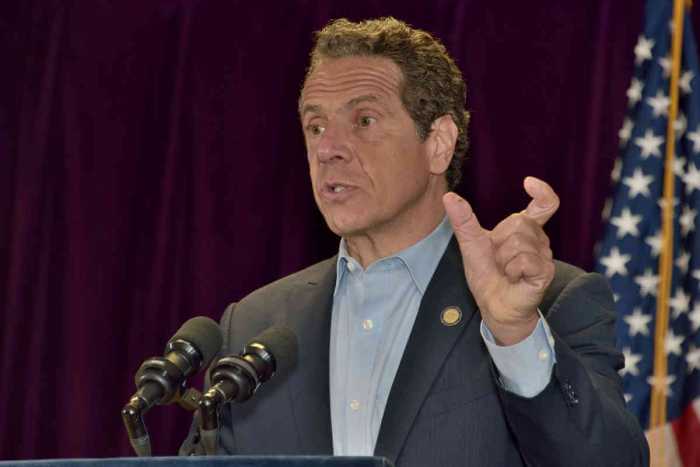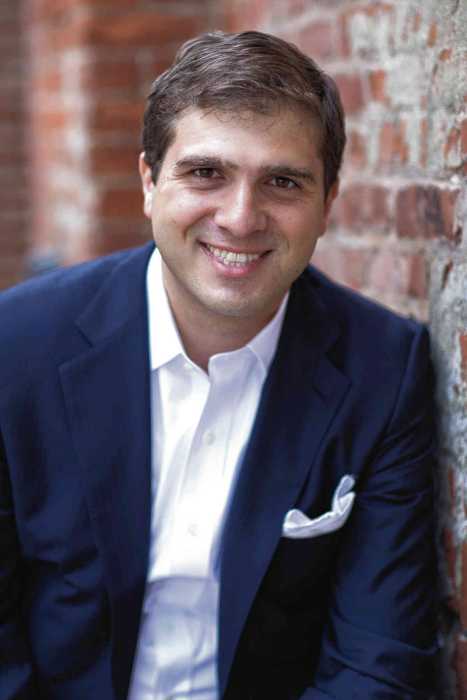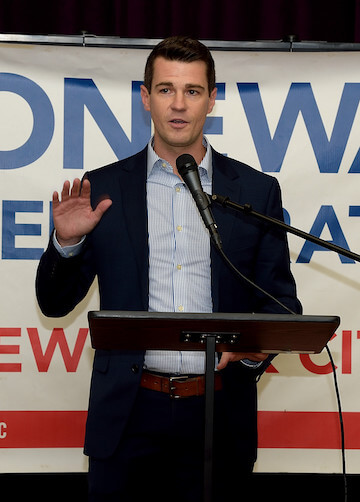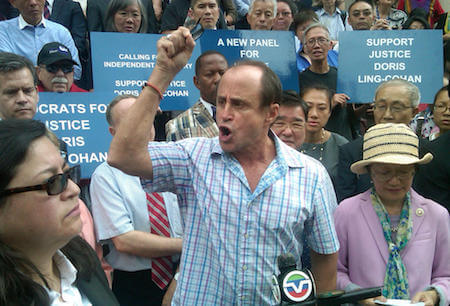BY ANDY HUMM | The momentum for declaring the area outside the Stonewall Inn a national monument overseen by the National Park Service seems headed for an inevitable conclusion, with all the political, LGBT rights movement, and community forces aligned in its favor at a May 9 public hearing at PS 41 in Greenwich Village.
The hearing was chaired by US Representative Jerry Nadler, a West Side Democrat widely credited with coordinating support for the designation. Nadler was joined by US Secretary of the Interior Sally Jewell and Jonathan Jarvis, the National Park Service (NPS) director.
The Inn, site of the 1969 Stonewall Rebellion that sparked the modern LGBT rights movement, would be the first national park designated because of its significance to gay history if — as expected — Jewell recommends that President Barack Obama use his powers under the Antiquities Act to declare it a monument by the 47th anniversary of the uprising in late June.
A national monument designation for Christopher Park would serve as the anchor for a larger national park area incorporating surrounding streets.
Nadler opened the proceedings by saying he was “confident” the president would act given that the other route to a national park — congressional legislation sponsored by him and New York’s two US senators, Democrats Chuck Schumer and Kirsten Gillibrand — is unlikely to pass with Republicans in charge of both houses.
The small triangular Christopher Park across the street from the bar has been transferred to the federal government as the result of a City Council resolution sponsored by Chelsea Democrat Corey Johnson, support from the de Blasio administration, and legislation quietly and unanimously passed in Albany through the leadership of Assemblymember Deborah Glick and Senator Brad Hoylman, both Democrats who represent the area, and signed by Governor Andrew Cuomo last month.
These three out gay and lesbian officials, along with City Comptroller Scott Stringer, Public Advocate Letitia James, and Manhattan Borough President Gale Brewer, spoke at a press conference Nadler held just prior to the hearing to announce the final push for the monument’s designation.
James, who noted she is the first African-American woman elected citywide, said, “The Stonewall Inn represents to the LGBT community what Selma represents for the civil rights movement and Seneca Falls represents for the women’s movement,” echoing Obama’s own linking of these three historic places in his Second Inaugural Address in 2013.
Jewell, in opening remarks at the hearing, said she was in eighth grade when the Rebellion happened and “oblivious to the struggles” of LGBT people, along with most Americans at the time. She noted that in 1969 “two people of the same sex could be arrested for dancing together” or for “wearing clothes of the other gender, so I’m inappropriately dressed” by that standard, given her pants and suit-jacket ensemble.
While Christopher Park — which already includes George Segal’s statues titled “Gay Liberation” of a male couple and a female couple, both painted solid white — will anchor Stonewall National Park, its appearance is not likely to change much other than in terms of signage (though the Stonewall Veterans’ Association, a group run by Williamson Henderson, who has long made widely disputed claims, for which no police or court records exist, of having been arrested during the uprising, was pushing an elaborate redesign at the Nadler hearing). Friends of Christopher Park, a volunteer group, will continue its unpaid efforts at maintaining the park, and the city will continue to contribute to upkeep.
During the hearing, Community Board 2 chair Tobi Bergman praised the proposal as “preserving the character of the neighborhood” while celebrating it as “a source of influence on the world.”
Andrew Berman, executive director of the Greenwich Village Society for Historic Preservation, credited the private and influential National Parks Conservation Association’s push for this park over several years with helping to advance the idea. He noted that the park will not include the actual site of the Stonewall Inn, already protected with federal, state, and city historic landmark designations, but urged that it be included.
Veteran gay activist Jim Fouratt, however, called the bar itself “a symbol of our oppression” and insisted that “what happened in the streets” is what needs to be commemorated. The Gay Liberation Front, he noted, was formed as a direct result of the Rebellion, making Stonewall distinct from earlier uprisings of LGBT people in spurring ongoing militant organizing that created a permanent political movement.
While the hearing was contentious at times as witnesses debated who was there, what it meant, and what else should be memorialized, they were unanimous in support of making the area a national park.
Michael E. Levine, 73, said he was in the Stonewall the night of the raid and that it marked a seismic shift in how gay people felt about themselves.
“From that date in ’69, I have been out to everyone I know,” he said.
Gil Horowitz, who said he participated in the Rebellion’s second night, testified that the bulk of those who rebelled were “homeless youth who hung out in Christopher Park — thrown out because they were gay.”
Randy Wicker, a gay activist since 1958, said, “There is no such thing as gay rights, there is just human rights.” He urged those creating the monument to fully incorporate the role played by people of color at Stonewall and in the movement that followed.
Scott Caplan, of the Jim Owles Liberal Democratic Club, said the story of Stonewall must also include the account of “oppression by the NYPD.” It was a police raid, after all, that sparked Stonewall’s patrons to fight back.
Transgender activist Josephine Fantasia Perez, who described herself as a daughter of Sylvia Rivera and niece of Marsha P. Johnson, two early transgender street activists of the Stonewall Era, made an impassioned plea about the life and death burdens that continue to weigh on transgender people.
“Give them a safe place,” Perez said. “Too many of us are homeless. There are too few jobs and job training programs. Educate parents so that they don’t throw their transgender kids out into the street.” She and other transgender witnesses, such as Mariah Lopez, argued that the Hudson River pier in the West Village, home over the years to many transgender homeless people, should also be part of a national park.
NPS Director Jarvis told the audience at the hearing’s conclusion, “I heard unanimous support. My job is to recommend to Secretary Jewell and her job is to recommend to President Obama that the Stonewall should join the Statue of Liberty and the Grand Canyon” as a national park, not just in recognition of the history of the Rebellion and the role the streets outside the Stonewall played in moments of both trauma and celebration for the community, but to highlight the “continued struggle” for LGBT rights.
Interior Secretary Jewell, who listened attentively but did not speak during the testimony, told Gay City News afterward that she heard “community support for telling an important civil rights story,” something she earlier said the 100-year-old National Park Service, as “America’s storyteller,” excels at.
Historian David Carter, author of “Stonewall: The Riots that Sparked the Gay Revolution,” widely considered a definitive account, sounded a cautionary note about storytelling — the importance of the Park Service settling on the facts of what happened and who was there in June 1969 before assuming the mantle of authority.
“Insist on the same level of evidence and the careful examination of evidence for this event that we expect for any other important event in our nation’s history,” Carter urged.











































